Epidemiological Studies of Children's Gut Microbiota: Validation of Sample Collection and Storage Methods and Microbiota Analysis of Toddlers' Feces Collected from Diapers
- PMID: 36014821
- PMCID: PMC9416069
- DOI: 10.3390/nu14163315
Epidemiological Studies of Children's Gut Microbiota: Validation of Sample Collection and Storage Methods and Microbiota Analysis of Toddlers' Feces Collected from Diapers
Abstract
The composition of human gut microbiota influences human health and disease over the long term. Since the flora in specimens can easily change at ambient temperature outside the body, epidemiological studies need feasible methods of stool specimen collection and storage to be established. We aimed to validate two methods: feces frozen-stored in tubes containing guanidine thiocyanate solution for two months after collection (Method B), and feces excreted in diapers and frozen-stored (Method C). Validation was by comparison with a gold standard Method A. Bacterial flora of five adults were sampled and stored by all three methods. Bacterial composition was examined by amplicon sequencing analysis. Bland-Altman analyses showed that Methods B and C might change relative abundances of certain bacterial flora. Thereafter, we analyzed the bacterial flora of 76 toddlers (two age groups) in stools sampled and processed by Method C. The diversity indices of toddlers' flora were less than those of adults. The relative abundance of some bacteria differed significantly between children aged 1.5 and 3 years. The specimen collection and storage methods validated in this study are worth adopting in large-scale epidemiological studies, especially for small children, provided the limited accuracy for some specific bacteria is understood.
Keywords: diaper; epidemiology; feces; gut microbiome; toddlers.
Conflict of interest statement
The authors declare no conflict of interest. The sponsors had no role in the design, execution, interpretation, or writing of the study.
Figures

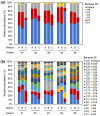

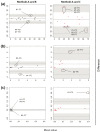
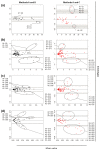
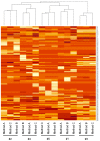
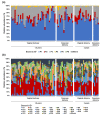
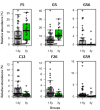
Similar articles
-
Collection of non-meconium stool on fecal occult blood cards is an effective method for fecal microbiota studies in infants.Microbiome. 2017 Sep 5;5(1):114. doi: 10.1186/s40168-017-0333-z. Microbiome. 2017. PMID: 28870234 Free PMC article.
-
An ambient-temperature storage and stabilization device performs comparably to flash-frozen collection for stool metabolomics in infants.BMC Microbiol. 2021 Feb 22;21(1):59. doi: 10.1186/s12866-021-02104-6. BMC Microbiol. 2021. PMID: 33618670 Free PMC article.
-
[Variations of gut microbiome composition under different preservation solutions and periods].Sheng Wu Gong Cheng Xue Bao. 2020 Dec 25;36(12):2525-2540. doi: 10.13345/j.cjb.200475. Sheng Wu Gong Cheng Xue Bao. 2020. PMID: 33398951 Chinese.
-
Current Trends and Challenges of Microbiome Research in Prostate Cancer.Curr Oncol Rep. 2024 May;26(5):477-487. doi: 10.1007/s11912-024-01520-x. Epub 2024 Apr 4. Curr Oncol Rep. 2024. PMID: 38573440 Review.
-
Overview of the Microbiome Among Nurses study (Micro-N) as an example of prospective characterization of the microbiome within cohort studies.Nat Protoc. 2021 Jun;16(6):2724-2731. doi: 10.1038/s41596-021-00519-z. Epub 2021 Apr 21. Nat Protoc. 2021. PMID: 33883746 Free PMC article. Review.
References
-
- Milani C., Duranti S., Bottacini F., Casey E., Turroni F., Mahony J., Belzer C., Delgado Palacio S., Arboleya Montes S., Mancabelli L., et al. The first microbial colonizers of the human gut: Composition, activities, and health implications of the infant gut microbiota. Microbiol. Mol. Biol. Rev. MMBR. 2017;81:e00036-17. doi: 10.1128/MMBR.00036-17. - DOI - PMC - PubMed
MeSH terms
Substances
Grants and funding
LinkOut - more resources
Full Text Sources

